Showing 25–36 of 77 results
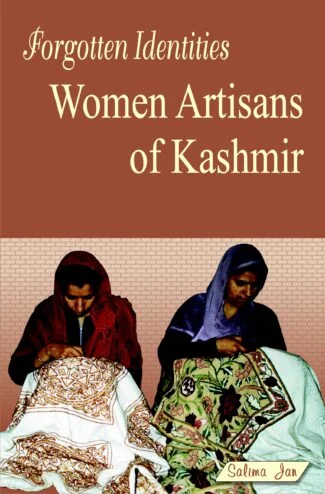
The work examines adoption of handicrafts as an occupation by artisan women of Kashmir to contribute significantly to their families and the society in spite of problems of earning livelihood in a patriarchal society. Based on empirical data, it deals with their socio-economic background, the way they cope with their duties at home and those of their profession, and their aspirations and rights.
The contribution of women to sustenance and survival of cultures and civilization, as such, has assumed new proportions in the last century or so, with women engaging themselves in a range of activities for livelihood in urban centres. Their contributions have, however, largely gone unacknowledged due to various factors. This study attempts to address this aspect by focusing on the role of urban women in the handicrafts sector in Kashmir. Dr. Salima Jan examines how the artisan women, in spite of difficulties of earning livelihood in a patriachal society, have adopted handicraft as a household occupation and are contributing immensely to family and society. Based on empirical data obtained from survey and presenting case studies, the work examines the socio-economic and educational background of artisan women before delving into aspects, such as, the nature of work done by them, their wages in different handicrafts, their control over these and the conditions under which the women have opted for the role. It analyses the manner in which the women cope with their dual roles involvement in household chores as well as employment in handicrafts and deals with their individual aspirations and rights in this context i.e., their say in decision-making in families and their perceptions of job satisfaction and changing role of women. This research effort would be useful to researchers and scholars engaged in a range of sociological disciplines but, particularly, associated with sociology of work and gender studies.

This anthology raises, discusses and debates issues, aesthetics and techniques connected with the Indian theatre in the backdrop of political, social and moral values of women in theatre. Unearthing the dynamics of gender, it fills up the vacuum of scholarly literature on the role of women in theatre.
This book explores the presence and contribution of women to the recorded history of Indian theatre. It provides a platform to raise, discuss and debate issues, aesthetics and techniques connected with the Indian theatre in the backdrop of political, social and moral values of women in theatre. An attempt to fill up the vacuum of scholarly literature on the role of women in theatre, this book expects to create enough academic value and interest. Its content unearths the dynamics of gender in the history of theatre. It extensively deals with the theoretical and practical aspects of women’s theatre.
This anthology also addresses the various social issues associated with gender inequality through essays, play-texts and interviews. In a similar vein, it delves deep into the relationship among theatre, public/private sphere and gender. This work purports to address a variety of needs of feminist researchers and laymen who are not conversant with the contribution of women to theatre and its obvious political and transformative intent.
This collection also intends to see how the theatrical space could unsettle the gendered binaries regulating women’s presence in public space, and proposes to see why and how relevant feminist politics is in re-imagining a vibrant and inclusive concept of gender fairness and justice in contemporary India. It extends high referral value for researchers, students and even laymen with interest in the role of women in theatre.
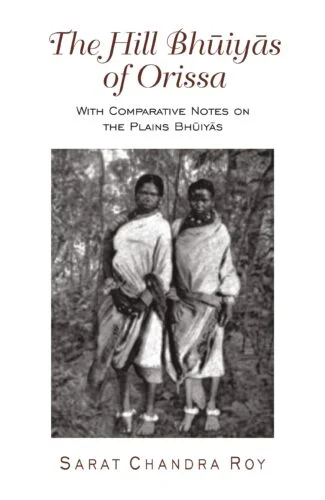
This book, a gold mine of socio-anthropological study of Orissan Pauri Bhuiyas, talks about affinities and population, habitat, physical and mental characteristics, economic life, social and kinship organizations, and customs of birth, childhood, puberty, marriage, inheritance and death. This volume also delves deep into their folklore, religious faith, superstitions and magic practices.
Bhuiyas, numbering around two million, are the aboriginal tribes of Central Hill Belt of India. These primitive Pauri or Hill Bhuiyas of Keonjhar, Bonai and Pal Lehera states, and the Hinduized Bhuiyas of Himgir and Nagra of Gangpur State of Orissa in British India are the subject of this study, delineating their various stages of cultural development over a period of time.
These Bhuiyas are comparatively more primitive in their customs and manners than the other sections of the tribe. But their contacts with the Hindu society and its culture have to a minimal extent modified their primitive culture. With the advent of cultural growth, some sections of these Bhuiyas have given up their honorific titles and adopted some Hinduized titles, to elevate themselves in the social hierarchy.
This book, a gold mine of socio-anthropological studies, offers much-needed details about the Pauri Bhuiyas affinities and population, habitat, physical and mental characteristics, economic life, social and kinship organizations, and customs of birth, childhood, puberty, marriage, inheritance and death. This volume also delves deep into their folklore, religious faith, superstitions and magic practices. It further discusses certain points of agreement and difference in the customs and beliefs of the Hill Bhuiyas and some other Munda-speaking tribes of the Central Hill Belt.

Prof. Dash studies the tribals absorption into Hindu society and their upward movement in the jati hierarchy in medieval Orissa at the micro level. The author discusses the history of the Jagannatha cult by considering the folk tradition.
The complex process of tribal absorption into the Hindu society and the mobility of jatis in the varna scale has been keenly studied by scholars in the past under various labels Sanskritization, Brahmanization and so on; however, there has resulted a tediousness owing to use of the same old trends and methods of research. Hindu and Tribals is a trend-setter in this regard as it studies the workings of this process from fresh perspectives using new methodologies of inter-disciplinary approach, for instance. Prof. G.N. Dash, a learned scholar in the field, studies the tribals absorption into the Hindu society and their upward movement in the jati hierarchy in medieval Orissa at the micro level. The author sheds some new light on the history of the Jagannatha cult by considering folk versions of this tradition. The salient feature of the work is its freshness in approach: its focus is on interaction of the socio-economic, religious and cultural forces and counter-forces unlike traditional historical works which primarily record the political events. Adopting a new methodology, it uses the concepts and tools of social sciences like ethnology to analyse historical data. Setting new trends in Orissan historiography, it emphasises the traditional account as a source material and seeks to discover the historical background of its evolution rather than its historical basis as such. Prof. G.N. Dash emerges with important statements that scholars and historiographers cannot afford to ignore: for instance, the strong possibility of tribal origin of the Sudha Suaras and Daitas (temple servants at Jagannatha shrine). With an extensive bibliography and index, this work is invaluable for further studies in Orissan historiography. Its well-researched statements and originality in approach would provide researchers fresh material and methods for study and extend young scholars the necessary motivation to adopt new methodological trends in research.
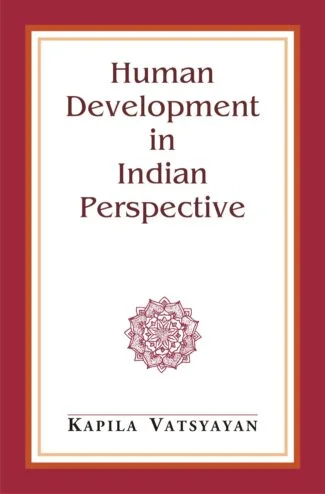
This book, a collection of six lectures Dr Kapila Vatsyayan made at different UNESCO seminars and two reports, presents, discusses, analyses and prognosticates the varied aspects of human development from the perspective of a developing country.
This book, a collection of six lectures Dr Kapila Vatsyayan made at different UNESCO seminars and two reports she prepared for UNESCO, presents, discusses, analyses and prognosticates the varied aspects of human development in India and other developing nations. She has made some commendable observations and suggestions with a futuristic view on UNDPs Human Development Report 1990 which defines and measures human development.
Through these papers and reports, Dr Vatsyayan has attempted to chart out a new perspective as far as development is concerned from the viewpoint of developing countries. The Western paradigms in defining development do not fit the frame of these countries. Culture, arts, oral wisdom, all should come to play a crucial role in defining, planning and executing developmental programmes in such countries, and in defining their educational status.
In addition, the volume provides a historical glimpse of Delhi and addresses the issues of cultural heritage and cultural lifestyle of the National Capital Territory of Delhi. In a nutshell, Dr Vatsyayan makes the readers travel with her continuous UNESCO engagement, over a period of sixty years.
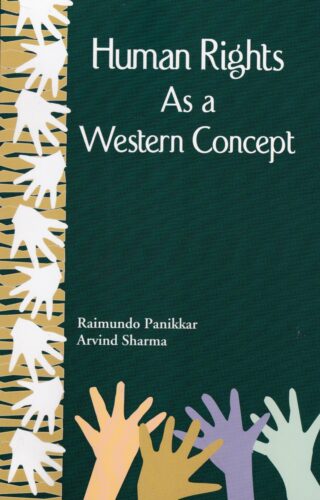
Whether the discourse on Human Rights constitutes an authentically universal discourse, or merely Western discourse masquerading as such, is an issue which has persisted ever since the Universal Declaration of Human Rights was adopted in 1948, and shows no signs of letting up. This book presents an in-depth exploration of this issue in a novel format, by presenting a celebrated piece on this issue by Raimundo Panikkar, with a detailed response to it by Arvind Sharma, thereby laying bare several key dimensions of the debate which may otherwise escape notice.
Whether the discourse on Human Rights constitutes an authentically universal discourse, or merely Western discourse masquerading as such, is an issue which has persisted ever since the Universal Declaration of Human Rights was adopted in 1948, and shows no signs of letting up. This book presents an in-depth exploration of this issue in a novel format, by presenting a celebrated piece on this issue by Raimundo Panikkar, with a detailed response to it by Arvind Sharma, thereby laying bare several key dimensions of the debate which may otherwise escape notice.
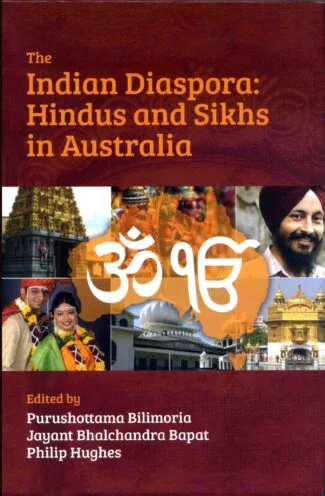
This book covers the theory of diaspora, the historical development of the Indian communities in Australia since the late 19th century to the present times, current practices and statistical profiles of Hindus and Sikhs in Australia, and interactions between Hindus and Sikhs with the wider Australian community.
Since the late 1990s, the Indian community in Australia has grown faster than any other immigrant community. The Indian Diaspora has made substantial contributions to the multi-ethnic and multi-religious diversity within Australia. The growth of Hinduism and Sikhism through gurus, temples, yoga and rituals of many kind has brought new colours, images, customs and practices to the profile of Australian religion, and the Australian landscape more widely. At the same time, Hinduism and Sikhism have themselves been transformed as Hindus and Sikhs from different parts of India as well as Fiji, Malaysia and other parts of the world have come together to establish a pan-Indian ethos. Hindus and Sikhs here have also interacted with other sectors of the Australian population and with religions from the Western world. This is the theme of this book.
The Indian Diaspora covers the theory of diaspora, the historical development of the Indian communities in Australia since the late 19th century to the present times, current practices and statistical profiles of Hindus and Sikhs in Australia, and interactions between Hindus and Sikhs with the wider Australian community. There are case-studies of the Indian students and women in the Australian community, of Indian communities in Melbourne and South Australia, and of temple building and the Sikh gurdwara.
The book has been edited by and contains contributions from Purushottama Bilimoria, an internationally-known scholar of philosophy and religion, Jayant Bhalchandra Bapat, one of Australias most senior Hindu priests and a scholar of Hinduism, and Philip Hughes, a leading analyst of the religious profiles of the Australian people. It also contains contributions from several other prominent scholars. Included are special essays on the importance of diaspora by the late Ninian Smart and on the 19th century Afghan cameleers and Indian hawkers.

The book examines the joint family system in India — its roots in Vedic times, its evolution and relevance and practicality in the present times, the changing social norms, value systems and human behaviour over time, the position and status of the aged with the decline of the system, etc.
The joint family system has ancient roots in India, being traceable to the Vedic times when four generations lived together. The tradition helped in maintaining strong bonds of kinship and keeping alive customs and traditions of the past. This book seeks to examine the joint family system in India: its evolution and relevance and practicality in the present times. It deals with the changing social norms, value systems and human behaviour over time and views the role of religion in promoting human values and fellowship which are an essential ingredient of joint family norms. With case studies, it explores aspects of the Indian family like its cultural and ritualistic traditions, the importance and role of the woman as the backbone of the Vedic society, the position and status of the aged with the decline of the joint family system, and the importance of the joint family as a vehicle for accumulating wealth — both material and in terms of serving and benefiting all. The volume will prove a useful contribution for scholars and students in the field of Indian social and cultural studies.
Does Indian civilization have the capacity to change or has it been static? The impression of this civilization as an unchanging one has been revised today. Conflict-tension processes in a complex heterogeneous civilization like that of India are equally important and require in-depth studies along with investigating the continuity of tradition. It is in this context that protest, dissent and reform movements have also played a critical role and facilitated adjustments to changing social realities over the centuries. From time to time alternate systems to the accepted ideological or normative patterns have been suggested. Apparently many of these movements were religious in nature, but the socio-economic context which remains in the background does require further detailed examination. The present volume reflects some aspects of these movements. It is one in the series undertaken as part of the group project A Sourcebook of Indian and Asian Civilizations at the Indian Institute of Advanced Study. The essays in this volume by such scholars as Arun Bali, Savitri Chandra, Narendra Mohan, M.G.S. Narayanan and Veluthat Kesavan; Y.M. Pathan, M.S.A. Rao, Sachchidananda, G.B. Sardar and Pushpa Suri will stimulate discussion and generate new perspectives towards understanding Indian civilization.
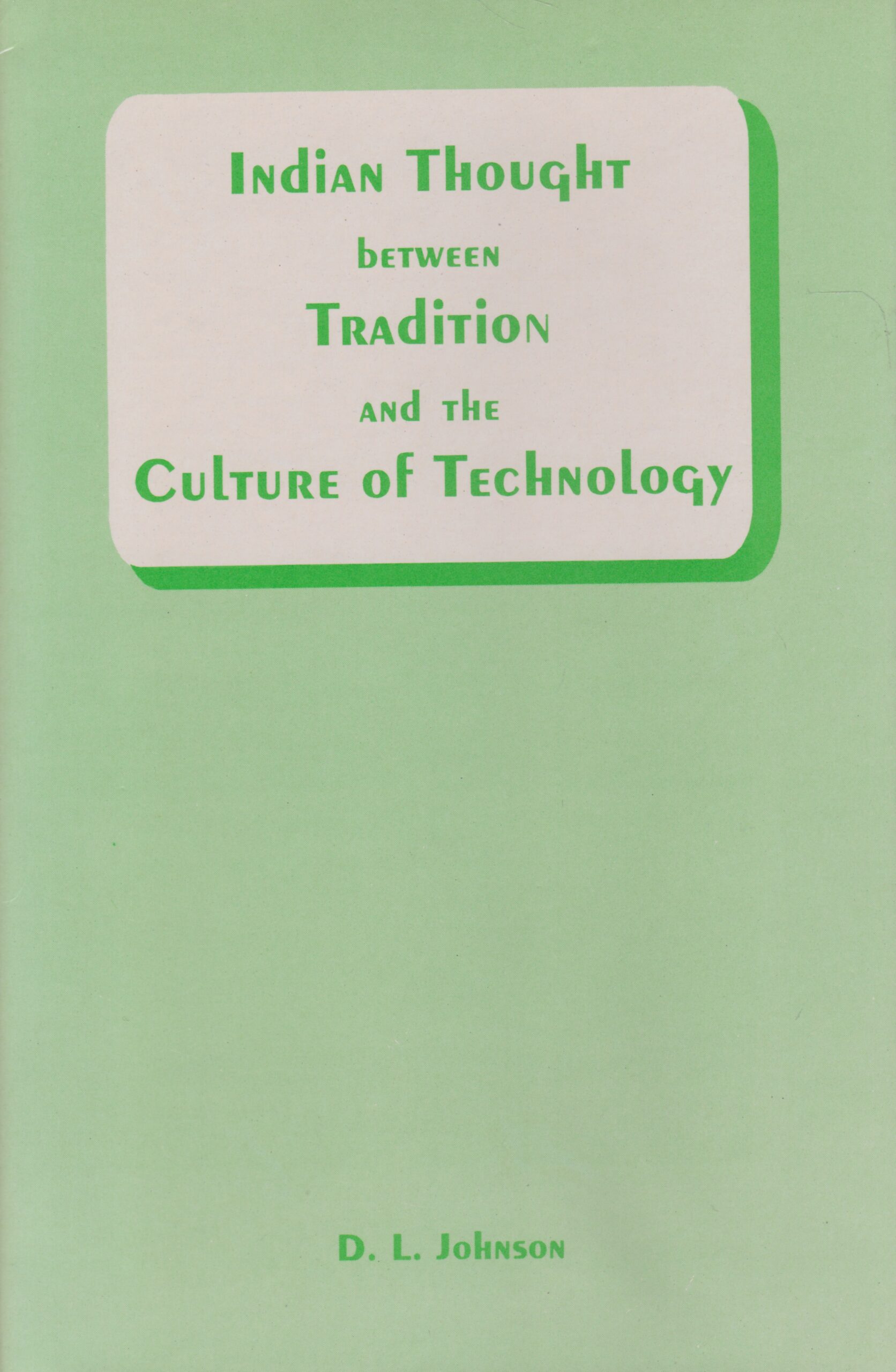
It is a socio-cultural study of the contemporary Indian society in the context of the invasion of the culture of technology. Analysing the reactions of Gandhi, Aurobindo, etc., it offers a futuristic assessment of the problem.
The book is a brilliant socio-cultural study of the contemporary Indian society in the context of the invasion of the culture of technology. The recent spate of technological advancements involves much more than the mere use of lifeless mechines. It is an inculcation of a constellation of values and ideas a new culture. In a tradition-bound society like India the culture of technology is looked at with panic and suspicion. The phenomenon of dehumanisation and the erosion of human values associated with this culture seems to confuse the Indian mind. Yet, India has not been able to withhold the march of this culture. Dr. Johnson makes a penetrating analysis of the Indian predicament with reference to the reactions of Gandhi, Sri Aurobindo and Jayaprakash Narayan; and offers a futuristic assessment of the problem. He argues that the solution lies not in dismissing the culture of technology but in incorporating it within the fabric of tradition, so that India can keep pace with the time. He tackles the problem by delving deep into the intracies of the matter of tradition and technology; and spells out the changes required in our traditional way of looking at things. The book is very contemporary in its approach and reflects a rare kind of optimism about Indias potentialities in facing the problem.
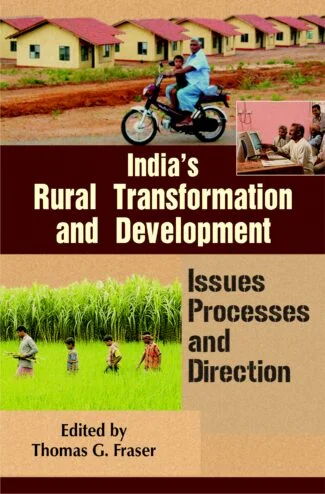
The book deals with the critical issues and challenges of rural India and suggests ways and means to bring it into the nation building. With traditional wisdom, it mixes innovative solutions for better rural life. It can entice rural investors and be a good reference for students and teachers of economics and sociology.
This book, a collection of updated articles presented in an international conference on India’s Rural Transformation and Development: Issues, Processes and Direction’ organized by the Cordia Group of Institutes and Sanghol community on 17-18 November 2011, talks about the criticality of different issues and challenges that the rural India faces and suggests ways and means to bring it into the nation-building exercise.
No country steadfastly grows without tapping its rural potential. Over 750 million people live in the Indian villages and there is a desperate need for them to get empowered in education and skills, and with state-of-the-art infrastructure, financial support and guidance, better agricultural methods, energy/gas generation technologies, communication network, and by introducing and training on village and eco tourism. All stake holders the Government, NGOs, banks and self help groups have to play a pivotal role in ensuring sustainable rural development without losing the charm and the quintessential look of the villages. The visionary Inaugural Lecture by Dr. A.P.J. Abdul Kalam, former President of India, is igniting and the icing on the cake.
The articles are authoritative, and few case studies, add value to the content. Concepts like Community Radio are of great interest. This book will help people who want to do investment in rural areas, students of economics and sociology, those in rural researches, and for those who have an urban heart.

The volume highlights the relevance of indigenous knowledge of South Asian tribal and rural communities in sustainable management of forests and local resources. With case studies, it shows that collective initiatives at the grassroots level and locally accepted patterns of livelihood of these communities can help address challenges of economic development vis-a-vis environmental hazard and a declining resource base.
Reflecting the latest findings of a large research project that began about a decade ago this volume, the 5th in the ongoing Man and Forest series, highlights the relevance of indigenous knowledge of various South Asian tribal and rural communities in the sustainable management of forests and local resources more specially against the growing challenges of economic development vis-a-vis environmental hazards and a declining resource base. Not only the volume reiterates the relevance of indigenous knowledge as a development tool in this age of standardized, modern know-how applications, but also illustrates its enormous impact on the social development in tribal and rural areas. Not just in India but in the adjacent countries of Nepal and Bhutan as well are analysed forest policy issues. In these countries, particularly in the current scenario of regulation, the authors emphasise of both collective initiatives at the grassroots level and securing the locally accepted patterns of livelihood for the tribal and village communities. The volume includes widely varied case studies on the role of indigenous knowledge in forestry, community living, and joint management of local natural resources. This book consists of 17 papers, based on cross-cultural, interdisciplinary investigations of well-known scholars of forest management, ethno-botanists, social anthropologists and of the members of several local NGOs involved in either community forestry or village development programmes.
| × |
|
Ardhanarisvara in Art and Literature 1 x ₹1,620.00 |
| × |
|
Bagore-Ki-Haveli 1 x ₹86.00 |